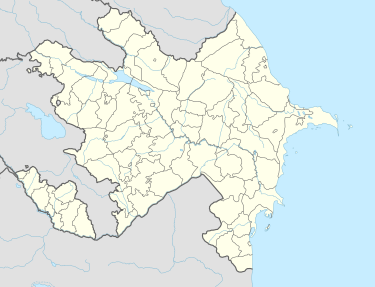필드 은하
Field galaxy필드 은하는 더 큰 은하군이나 은하단에 속하지 않기 때문에 중력적으로 단독으로 존재하는 은하입니다.
우리은하의 5Mpc(16Mly) 내에 있는 모든 은하의 약 80%는 [1]은하단 또는 은하단에 속해 있습니다.대부분의 저표면 밝기 은하는 필드 [2]은하입니다.허블형 필드 은하의 중앙은하는 나선은하의 [3]일종인 Sb입니다.
필드 은하 목록
국부 체적 내에 있는 비교적 밝은 근처 필드 은하 목록, 약 10Mpc(33Mly)[4]
| 갤럭시 | 유형 | 크기 | 콘스텔레이션 | RA | DEC | 거리 | 메모들 | |
|---|---|---|---|---|---|---|---|---|
| NGC 404 | SA0 | 안드로메다 | 01h 09m 27.0s | +35° 43′ 04″ | 11.2 Mly (3.4 Mpc) | [4] | ||
| NGC 1313 | 소량 | 망막 | 03h 18m 15.4s | −66° 29′ 50″ | 12.89 Mly (3.95 Mpc) | 울퉁불퉁한 모양 때문에 '톱시 터비 은하'라는 별명이 붙었다. | [4] | |
| NGC 2188 | SM | 콜럼바 | 06h 10m 09.7s | −34° 06′ 50″ | 27.5 Mly (8.4 Mpc) | [4] | ||
| NGC 2683 | 스케이 | 링스 | 08h 52m 41.3s | +33° 25′ 18″ | 32.9 Mly (10.1 Mpc) | [4] | ||
| NGC 2903 | SBBC | 레오 | 09h 32m 10.1s | +21° 30′ 03″ | 30.6 Mly (9.4 Mpc) | [4] | ||
| NGC 3115 | S0 | 육탄 | 10h 05m 14.0s | −7° 43′ 07″ | 31.6 Mly (9.7 Mpc) | [4] | ||
| NGC 3621 | SAd | 히드라 | 11h 18m 16.5s | –32° 48′ 51″ | 21.7 Mly (6.7 Mpc) | [4] | ||
| NGC 4136 | SABc | 혼수 베레니케스 | 12h 09m 17.7s | +29° 55′ 39″ | 40.9 Mly (12.5 Mpc) | [4] | ||
| NGC 4605 | SB(s)c | 큰곰자리 | 12h 39m 59.4s | +61° 36′ 33″ | 15.3 Mly (4.7 Mpc) | [4] | ||
| NGC 5068 | SAB(rs)cd | 처녀자리 | 13h 18m 54.8s | −21° 02′ 21″ | 19.8 Mly (6.1 Mpc) | [4] | ||
| NGC 6503 | SA(s) CD 라이너 | 30kly(9.2kpc) | 드라코 | 17h 49m 26.514s | +70° 08′ 39.63″ | 18.5 Mly (5.7 Mpc) | Lost-In-Space 은하는 로컬 보이드 옆에 위치하기 때문에 "Lost-In-Space 은하"라고도 불립니다. | [4][5][6][7] |
추가 정보
- Piero Madau; Lucia Pozzetti; Mark Dickinson (1998). "The Star Formation History of Field Galaxies". The Astrophysical Journal (published May 1998). 498 (1): 106–116. arXiv:astro-ph/9708220. Bibcode:1998ApJ...498..106M. doi:10.1086/305523.[8]
- David R. Silva; Gregory D. Bothun (July 1998). "The Ages of Disturbed Field Elliptical Galaxies. I. Global Properties". The Astronomical Journal. 116 (1): 85. Bibcode:1998AJ....116...85S. doi:10.1086/300394.
- David R. Silva; Gregory D. Bothun (December 1998). "The Ages of Disturbed Field Elliptical Galaxies. II. Central Properties". The Astronomical Journal. 116 (6): 2793. Bibcode:1998AJ....116.2793S. doi:10.1086/300642.
- Pieter G. van Dokkum (27 June 2005). "The Recent and Continuing Assembly of Field Ellipticals by Red Mergers". The Astronomical Journal (published December 2005). 130 (6): 2647–2665. arXiv:astro-ph/0506661. Bibcode:2005AJ....130.2647V. doi:10.1086/497593.[3]
- Anatoly Klypin; Igor Karachentsev; Dmitry Makarov; Olga Nasonova (18 May 2014). "Abundance of Field Galaxies". Monthly Notices of the Royal Astronomical Society. 454 (2): 1798–1810. arXiv:1405.4523. Bibcode:2015MNRAS.454.1798K. doi:10.1093/mnras/stv2040.
레퍼런스
- ^ 천문학자 나히히텐, "공의 공허함에 대하여", K.-H. 슈미트, 페트라 뵐, 한스 엘세저, 318권, No. 2, 페이지 81, 비브코드: 1997AN....318...81S
- ^ "은하와 우주론에 대한 입문", 데이비드 J. 애덤스 등
- ^ a b Pieter G. van Dokkum (27 June 2005). "The Recent and Continuing Assembly of Field Ellipticals by Red Mergers". The Astronomical Journal (published December 2005). 130 (6): 2647–2665. arXiv:astro-ph/0506661. Bibcode:2005AJ....130.2647V. doi:10.1086/497593.
- ^ a b c d e f g h i j k l Jürgen Materne (April 1979). "The structure of nearby groups of galaxies – Quantitative membership probabilities". Astronomy & Astrophysics. 74 (2): 235–243. Bibcode:1979A&A....74..235M.
- ^ "Lonely galaxy lost in space". Space Daily. 11 June 2015.
- ^ "NGC 6503". NASA/IPAC Extragalactic Database.
- ^ "NGC 6503". SIMBAD. Centre de données astronomiques de Strasbourg. Retrieved 26 February 2018.
- ^ Piero Madau; Lucia Pozzetti; Mark Dickinson (1998). "The Star Formation History of Field Galaxies". The Astrophysical Journal (published May 1998). 498 (1): 106–116. arXiv:astro-ph/9708220. Bibcode:1998ApJ...498..106M. doi:10.1086/305523.


